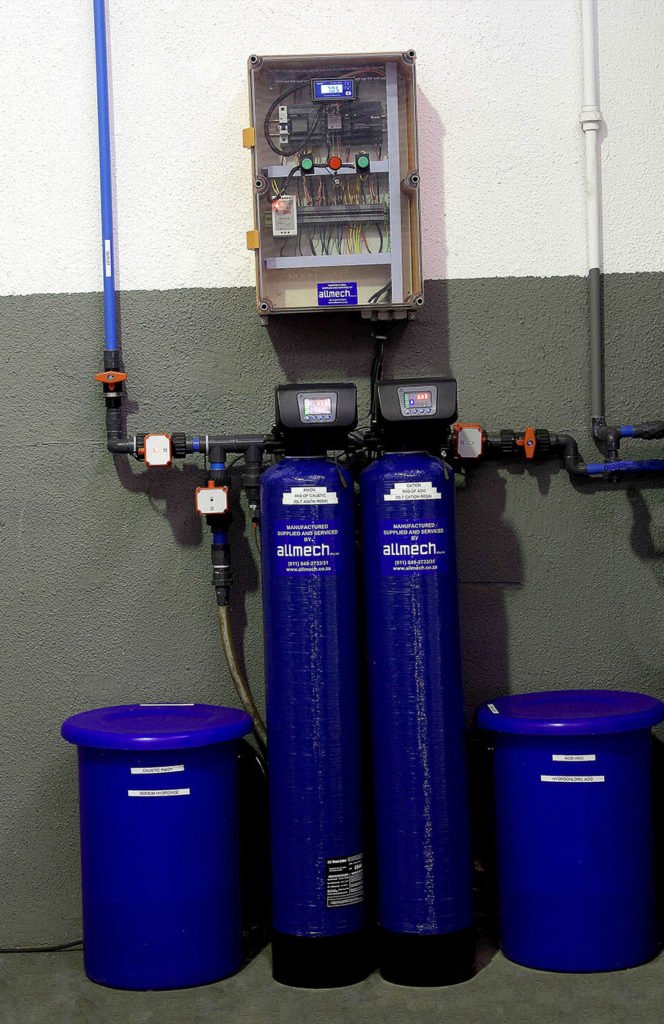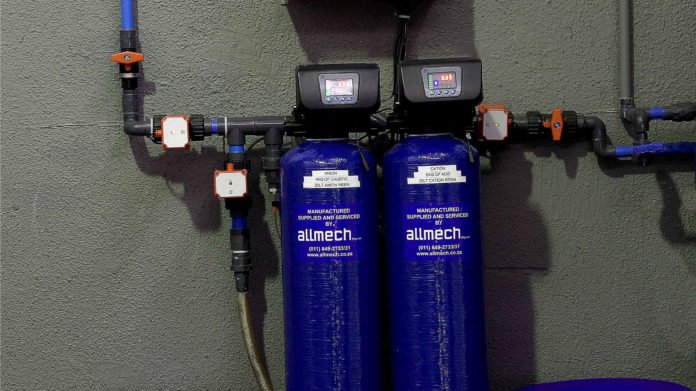Demineralisation removes dissolved solids (total dissolved solids or TDS) and mineral ions from feed water and process streams. Demineralisation (demin) plants typically use ion exchange to offer near-total removal of ionic mineral contaminants. Allmech, leading South African manufacturer of boilers and supplier of water treatment components, has been testing a new PLC system with in-house developed software to run its ion exchange demin plant, with encouraging results.
“We’ve been testing the system for several months now, and we believe we’ve built something that can help our customers with their water demineralisation needs,” says Lionel Maasdorp, MD at Allmech. “Water purification options depend on customer needs, but all else being equal, demin plants require a lower capital investment than reverse osmosis plants.”
Demin plants are used for various industrial and scientific purposes. These could range from laboratory applications and testing, to computer chip manufacturing, lead-acid batteries, cooling systems, high pressure boiler feed, laser cutting, steam irons and steam raising, pharmaceutical manufacturing, cosmetics, aquariums and fire extinguishers. Maasdorp says that Allmech’s customers who use demin plants tend to be in the food and beverage industries.

“A demin plant typically consists of two vessels; one containing cation and the other containing anion exchange resins,” he says. “Raw water enters first through the cation resin, where mineral contaminants are replaced by hydrogen ions. Then it flows through an anion resin, where mineral contaminants are replaced by hydroxyl ions, which combine with the hydrogen ions to form pure water. A demin plant then needs to be regenerated with hydrochloric acid and sodium hydroxide when necessary.”
READ: Tunisia to commission Sidi Abdelhamid desalination plant mid-2023
The disadvantages of this type of system are that the caustic and acid required to regenerate the resin creates a waste product that must be disposed of, and that the system cannot run indefinitely – it needs downtime for regeneration to take place. “With our current setup, we can run the system for eight hours before it needs to regenerate,” says Maasdorp. “Changing the volume of the resin you use to give you longer running times and also higher deliverables of clean water. There’s also less reject water than with a reverse osmosis plant.”
In fact, there’s a fair amount of flexibility in the configuration of a demineralisation system to optimally meet various process conditions and purity goals. In designing a demineralisation system, Maasdorp says consideration should be given to changeability of the feed water, level of purity needed, system footprint, tolerance for ion leakage (in particular sodium and silica), and chemical feed requirements, among other factors.
With the addition of the new PLC, Allmech’s demin plant is more easily customisable through the programming of the various inputs. It also offers alarm functionality to flag when water quality isn’t up to scratch, which ensures the water is not needlessly dumped through backwashing and alerts the user to potential issues in the system.
Control valves are demand-initiated controllers that allow demin plant units to be extremely efficient,” Maasdorp says. “The control valves have five main functions: service, backwash, brine and slow rinse, brine refill and fast rinse. Allmech is the sole agent for Runxin water treatment system valves in the South Africa. We supply a full range of manual and automatic filter and softener valves. The valves are reliable, easily available, user-friendly and cost effective. We have just received a new shipment, so we’re well positioned to support our customers with all their demineralisation plant needs.”





